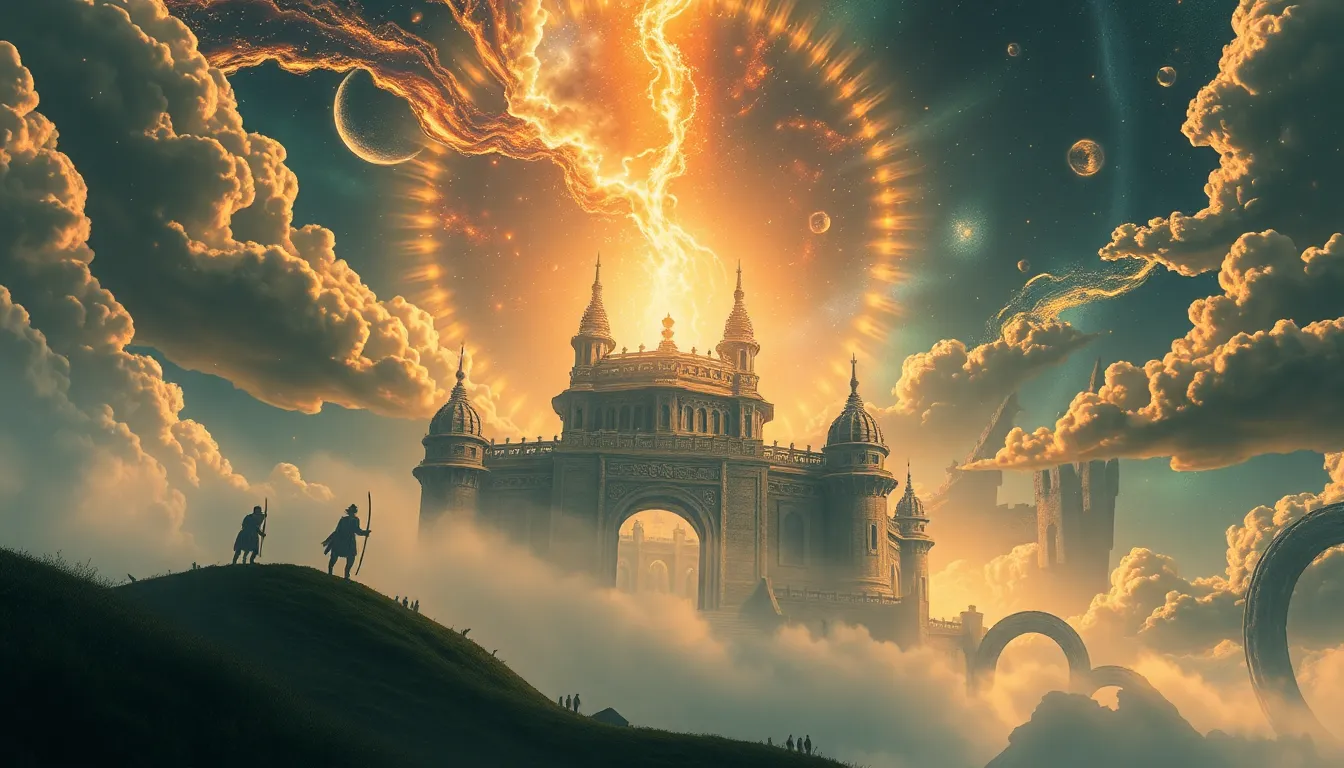The Legendary Kingdom of the Celestial Harmonizers: Myths of Unity
I. Introduction to the Kingdom of the Celestial Harmonizers
The Kingdom of the Celestial Harmonizers occupies a unique place in the pantheon of mythological realms. It symbolizes the aspiration for unity and cooperation among diverse beings, transcending boundaries of culture, race, and belief. In an age where division often prevails, the stories of the Harmonizers serve as a reminder of the power of collective harmony.
This kingdom’s significance lies not just in its tales, but in the profound lessons of unity that resonate through its myths. By exploring these narratives, we uncover the timeless messages that encourage understanding and collaboration among all.
II. Historical Background of the Kingdom
The origins of the Kingdom of the Celestial Harmonizers are steeped in history, often described in ancient texts as having emerged from the first echoes of cosmic creation. Legends tell of a time when chaos reigned, and the Harmonizers were born from the essence of unity itself.
Key historical figures, such as the First Harmonizer, Althea, are celebrated for their roles in establishing the kingdom. Althea, a deity of compassion, brought together the disparate tribes of the land, fostering a culture that valued collaboration over conflict. Over time, the kingdom evolved into a rich tapestry of cultural practices and values, emphasizing the importance of community, art, and shared goals.
III. The Celestial Harmonizers: Deities of Unity
At the heart of the kingdom are the Celestial Harmonizers, a pantheon of deities each representing different facets of unity. These deities embody the principles that guide the kingdom and inspire its inhabitants.
- Althea: The goddess of compassion, who teaches that understanding and empathy are the foundations of unity.
- Orin: The god of collaboration, representing the power of teamwork and joint efforts.
- Liora: The goddess of creativity, symbolizing the importance of artistic expression in bringing people together.
Each Harmonizer holds a unique role, and their symbolism—ranging from the olive branch of peace to the intertwined rings of connection—serves as a reminder of the values they represent.
IV. Myths and Legends Surrounding the Harmonizers
The myths surrounding the Celestial Harmonizers are rich and varied, offering insights into both the creation of the kingdom and the challenges it faced. The creation myths often depict the Harmonizers coming together to form the world, weaving the fabric of existence through their combined powers.
One notable legend tells of a great conflict among the deities that threatened the harmony of the kingdom. This tale illustrates the importance of dialogue and resolution, as the deities learned to communicate and embrace their differences, ultimately restoring peace.
Additionally, many heroes from the kingdom’s lore exemplify the spirit of unity. These individuals faced insurmountable odds yet succeeded by fostering cooperation among the people, demonstrating that true strength lies in togetherness.
V. The Role of Music and Art in the Kingdom
Music and art play pivotal roles in the Kingdom of the Celestial Harmonizers, serving as powerful tools for promoting harmony. The kingdom’s music is characterized by melodies that blend different cultural influences, symbolizing the unity of its diverse inhabitants.
- Traditional songs often tell stories of the Harmonizers and their teachings.
- Artistic expressions, from paintings to sculptures, depict scenes of collaboration and shared joy.
Celebratory festivals dedicated to the Celestial Harmonizers are held throughout the year, featuring vibrant performances that highlight the kingdom’s artistic heritage. These gatherings not only entertain but also reinforce the community’s commitment to unity.
VI. Lessons of Unity from the Myths
The myths of the Celestial Harmonizers impart essential moral teachings that resonate across generations. Key lessons include:
- The power of empathy and understanding in resolving conflicts.
- The necessity of cooperation to achieve common goals.
- The celebration of diversity as a strength rather than a weakness.
These teachings are particularly relevant in today’s society, where divisions often overshadow commonalities. By embracing the lessons of the Harmonizers, individuals can foster a sense of community and collaboration in their own lives.
VII. The Kingdom’s Influence on Contemporary Culture
The legacy of the Celestial Harmonizers extends beyond ancient myths, influencing contemporary culture in various ways. References to the Harmonizers can be found in modern literature, films, and art, often serving as metaphors for unity and the human experience.
Philosophically, the teachings of the kingdom have inspired movements that advocate for peace, inclusivity, and social justice. Celebrations and traditions rooted in the kingdom’s myths continue to thrive, fostering a sense of belonging among people who resonate with its ideals.
VIII. Critiques and Interpretations of the Myths
Critics argue that some interpretations may oversimplify the complexities of diversity, reducing rich cultural identities to mere symbols of unity. Scholarly perspectives often explore these nuances, emphasizing the importance of inclusivity in discussions about unity and harmony.
IX. The Future of the Kingdom’s Legacy
The myths of the Celestial Harmonizers continue to evolve, adapting to the changing societal landscape. As new generations engage with these stories, there is potential for revitalizing the kingdom’s teachings, making them relevant in contemporary discussions about unity and coexistence.
Efforts to preserve and share the myths can inspire future generations, encouraging them to embrace the values of compassion, collaboration, and creativity that the Harmonizers represent. A call to action exists for communities to celebrate these narratives and integrate their lessons into daily life.
X. Conclusion
In conclusion, the Kingdom of the Celestial Harmonizers stands as a beacon of hope and inspiration in the realm of mythology. Its tales of unity and cooperation offer invaluable lessons that are applicable even in today’s world. By exploring these myths and embracing their teachings, we can foster a more harmonious society, guided by the principles of understanding and collective strength.



